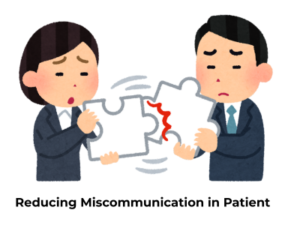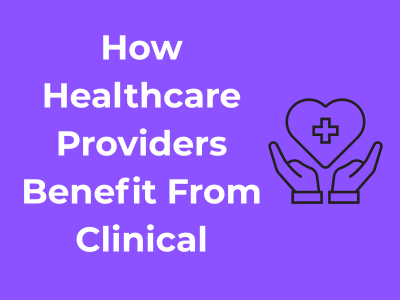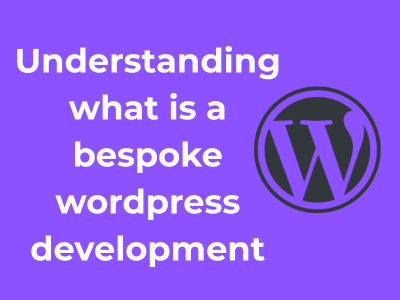Let’s face it – in healthcare, teamwork isn’t just about efficiency; it’s about saving lives. The healthcare field demands incredible coordination among professionals, whether it’s doctors, nurses, technicians, or therapists. Unfortunately, poor communication has long been a weak link in healthcare systems worldwide. But here’s the good news: clinical collaboration platforms are changing the game especially when you hire a dedicated team to create smoother, faster, and more accurate communication channels
Why Communication Really Matters
Imagine this: A nurse discovers a patient rapidly declining but struggles to get the message across to the attending physician because she can’t reach them quickly. It sounds like a nightmare, right? Stats back this up – according to studies, ineffective communication is one of the leading causes of medical errors. Clinical collaboration platforms step in by offering real-time messaging, video calls, and instant alerts, minimizing any delay in critical information sharing.
Breaking Down Silos in Healthcare Teams
Hospitals and clinics often operate in silos, with departments working almost independently of one another. This can slow things down and lead to fragmented patient care. By adopting a clinical collaboration platform, healthcare providers can bridge gaps between teams. Whether it’s an Emergency Department needing lab results ASAP or a surgeon consulting with radiologists pre-op, seamless communication helps staff work more cohesively.
Key Communication Features to Look For
- Secure Messaging: Enables HIPAA-compliant communication to share updates while protecting patient privacy.
- Instant Alerts: Sends automatic notifications to the right team members when patient vitals go south, reducing the chance of delays.
- Integration with Devices: Allows healthcare staff to communicate through smartphones, tablets, or computers for flexibility.
- Group Chats: Facilitates collaboration between multiple specialists or cross-functional teams for complex cases.
Examples of Life-Saving Coordination
Let’s talk real-life scenarios. Consider a trauma unit in action: A patient brought in with severe injuries needs inputs from an ER doctor, imaging staff, an anesthesiologist, and a surgeon. With a clinical collaboration system, these teams can collaborate in near real-time to determine the best course of action collectively. This rapid and unified decision-making can truly make the difference between life and death.
Making Communication Intuitive for Staff
Despite the benefits, technology adoption can sometimes feel daunting. That’s why the best clinical collaboration platforms are designed with intuitive user interfaces, making it easy for healthcare providers, no matter their tech expertise. Training programs often accompany these platforms to ensure everyone feels capable and confident using them. In no time, it becomes part of their workflow – almost like second nature.
Reducing Miscommunication in Patient Handovers

Picture this: a busy hospital floor, doctors and nurses rushing to attend to numerous patients, each with their own unique medical history, allergies, and treatment plans. Amidst this whirlwind, smooth and effective communication during patient handovers isn’t just a convenience—it’s a necessity. Miscommunications can lead to errors, and when lives are at stake, even small mistakes can have significant repercussions.
Thankfully, clinical collaboration platforms are stepping up to help healthcare providers minimize the risks associated with handovers, ensuring patients receive precise and consistent care at every step. Let’s break this down and see how these tech tools are revolutionizing the way health teams work together!
Why Is Communication So Tricky During Handover?
Healthcare teams face a myriad of challenges during shift changes and patient transitions:
- Time Pressure: Quick shifts between incoming and outgoing staff can leave little time for comprehensive discussions.
- Information Overload: Clinicians manage multiple patients with complex data, such as test results and medication schedules.
- Human Error: In a high-paced environment, it’s all too easy to forget or incorrectly relay vital details.
Without the right tools, chaotic handoffs can become the perfect storm, putting patient safety at risk. But don’t worry—this is where clinical collaboration platforms shine.
The Role of Clinical Collaboration Platforms
Designed specifically for healthcare settings, collaboration platforms provide teams with a centralized hub for communication. They offer several key benefits that reduce miscommunication during handovers:
- Standardized Handover Process: These platforms create a uniform template for recording and transferring patient information. Standard forms leave no room for ambiguity—everything from medication schedules to recent lab results is accounted for.
- Real-Time Updates: Since team members can input and update records in real time, incoming staff always have access to the most up-to-date patient data. This eliminates confusion caused by out-of-date or incomplete notes.
- Multi-Device Access: Clinical collaboration tools are often accessible via tablets, desktops, and even smartphones, ensuring staff can review information wherever they are—be it on-site or remotely.
By implementing these features, platforms become a reliable ally for reducing the guesswork and miscommunication that can occur during handovers.
Pro Tips for Better Patient Handovers
Technology is powerful, but success also depends on how healthcare providers integrate it into their workflows. For effective handovers, clinicians can:
- Adopt the SBAR Framework: Situation, Background, Assessment, Recommendation—a standardized communication method ensures clarity.
- Use Voice Notes with Caution: While audio updates can be helpful, they should be complemented with written records for reference.
- Encourage Team Buy-In: Ensure all staff are trained and comfortable using the platform for seamless transitions.
A Win for Patients and Providers Alike
At the end of the day, improving handover communication doesn’t just help healthcare providers—it has a direct impact on patient outcomes. Fewer errors mean better continuity of care, reduced hospital stays, and more lives saved. A small investment in clinical collaboration technology leads to enormous dividends in trust, safety, and well-being.
Streamlining Access to Vital Patient Information

Let’s get one thing straight: accessible and accurate patient information is the backbone of effective healthcare. Imagine a hospital team trying to crack a puzzle without all the pieces—it’s stressful and highly inefficient. That’s why clinical collaboration platforms, designed to centralize and streamline patient information, are transforming how healthcare providers operate today.
Why Access Matters
Think about this: in a busy emergency department, time is of the essence. A nurse shouldn’t have to dig through stacks of paperwork or navigate outdated systems to find crucial information about a patient’s medical history, allergies, or current medications. With clinical collaboration platforms, that vital data is just a click or tap away. These tools consolidate patient records so healthcare teams can swiftly access the right details when they need them most.
Making Information Centralized and Clear
The beauty of these platforms is that all the information is centralized. No one is scrambling between systems, filling in physical forms, or second-guessing a detail. Say goodbye to communication silos! Everyone on a patient’s care team—doctors, nurses, lab technicians—can operate from the same digital playbook. How’s that for efficiency?
- Need a recent lab result? Retrieved in seconds.
- Seeking the updated treatment plan? Check the shared platform.
- Monitoring medication orders? Verified and tracked in the system.
Everything healthcare providers might need is in one place, helping their workflow feel less like a juggling act and more like a well-choreographed dance. With less time spent hunting down records, more time can be spent where it truly matters—patient care.
Facilitating Multidisciplinary Collaboration
It’s not just about storing information; it’s also about ensuring real teamwork. Collaborative platforms aren’t just accessible to one role in the healthcare chain—they serve the entire team. This transparency ensures everyone is aligned and focused on shared patient goals. Picture a surgeon reviewing imaging results shared moments earlier by a radiologist, who then updates a nurse on the timeline for a patient’s procedure. The chain of communication is smooth, efficient, and seamless within the platform itself.
Improvements for Specialized Teams
Here’s another compelling piece of the puzzle: access to vital patient information doesn’t only help in general care settings. It also plays an enormous role in specialized departments like oncology, maternity, or intensive care units. A streamlined flow of information allows specialists to make data-driven choices and customize treatments much more effectively. The system supports personalized medicine instead of a one-size-fits-all approach, leading to better patient outcomes. Now, that’s powerful healthcare.
Future-Proofing Healthcare Communication
As healthcare becomes more dependent on digital solutions, integrating platforms that house vital patient information prepares providers for what’s next—whether it’s leveraging AI analyses for faster diagnostics or simplifying remote consultations. Clinical collaboration platforms are built to adapt, ensuring that providers and patients stay on the cutting edge of healthcare innovation.
Ready to Share the Benefits With Patients?
When healthcare professionals have streamlined access to the right patient information at the right time, the results speak for themselves: reduced errors, faster decisions, and a higher standard of care. By adopting clinical collaboration platforms, providers are not just improving their own workflows but also actively enhancing the patient experience. It’s a win-win for all involved!
Enhancing Real-Time Decision Making in Critical Moments
When it comes to the world of healthcare, time can truly be a matter of life and death. Making the right decisions, especially in high-pressure situations, is one of the most critical aspects of patient care. So, let’s talk about how clinical collaboration platforms are revolutionizing real-time decision-making in critical moments and turning high-stakes scenarios into well-managed outcomes.
Think about it: A patient comes into the emergency room with ambiguous symptoms. Time is ticking, and the care team is racing to determine the right course of action. In these situations, having a platform that supports instant, real-time collaboration can make all the difference.
Instant Communication Builds Confidence
One of the biggest advantages of a clinical collaboration platform is its ability to connect healthcare professionals instantly. When an emergency arises, these platforms ensure that doctors, nurses, specialists, and even on-call consultants can communicate without friction. Instead of hunting down pagers, sending delayed emails, or enduring long wait times through traditional communication channels, teams are just a few taps away from a solution.
- Need an opinion from a cardiologist immediately? Send a quick, secure message.
- Have lab results that need a second look? Share them through a centralized system where everyone on the case can access them in seconds.
- Want to confer with a remote expert? Video conferencing on these platforms allows you to bring in their expertise visually and verbally, right on the spot.
With clear communication, each team member knows their role, resulting in faster, more confident decisions.
Break Down Silos for Faster Collaboration
The traditional healthcare environment sometimes creates silos, where different departments or units don’t always have seamless communication with one another. Clinical collaboration platforms eliminate these divides. Teams can access shared dashboards, input real-time updates, and create a single source of truth for everyone involved. This is especially powerful in moments where seconds count – say, during a patient’s cardiac arrest or other critical care situations.
“Being able to collaborate across departments in real time reduces delays in getting the patient the intervention they need. It empowers the care team to act together instead of as isolated units.”
Avoiding Information Overload While Prioritizing Accuracy
It’s one thing to have information, but it’s another to sift through it quickly to find what’s absolutely necessary. Clinical collaboration platforms help to avoid the confusion that comes from information overload by sorting through patient data automatically and displaying only the most relevant, real-time details. For healthcare professionals, this means the ability to go from analysis to action without delay.
Critical Moments Deserve Smart Tools
In today’s complex medical environment, moments of crisis call for tools designed with practicality and ease of use in mind. The best clinical collaboration platforms are built to be intuitive, not adding to the stress of a critical moment but alleviating it. Whether it’s giving a doctor the chance to focus on a patient’s immediate needs or allowing a nurse to relay treatment progress to a team, these systems are invaluable during high-stakes scenarios.
So, the next time you think about how healthcare teams make life-changing decisions under pressure, know that these clinical collaboration platforms are their secret weapon, steering them toward saving lives more efficiently, effectively, and collaboratively in real time.
Tackling Privacy and Security Concerns Effectively
When it comes to healthcare, one of the most pressing challenges is safeguarding sensitive patient information. It’s no secret that privacy and security concerns often weigh heavily on the minds of healthcare providers. Fortunately, clinical collaboration platforms are stepping in to offer innovative solutions that keep data safe while ensuring seamless communication. Let’s explore this topic together and see how these platforms are addressing this critical issue.
Why Privacy and Security Matter in Healthcare
First things first: why is privacy such a big deal in healthcare? Well, medical records contain highly sensitive information about patients – from their diagnoses and treatments to personal identifiers like addresses and Social Security numbers. A breach of this data could have serious consequences, ranging from identity theft to loss of trust in healthcare providers. Maintaining the confidentiality, integrity, and availability of patient data isn’t just a legal requirement; it’s a cornerstone of ethical practice.
How Clinical Collaboration Platforms Protect Patient Data
Modern clinical collaboration platforms prioritize security without compromising usability. Here’s how:
- End-to-End Encryption: This ensures that data exchanged between healthcare providers is fully encrypted and can only be accessed by authorized parties. It’s like putting your conversations and data in an unbreakable lockbox.
- User Authentication: Advanced platforms use multi-factor authentication to verify the identity of every user logging in. By requiring not just a password but also an additional authentication step (like a code sent to your phone), they make it much harder for unauthorized users to gain access.
- Role-Based Access Controls: Not everyone needs access to everything. These controls ensure that healthcare staff can only access the patient data they truly need for their role. It’s like giving each person their own key to unlock only what’s necessary for their job.
- Regular Security Audits: Leading platforms often undergo frequent security checks and audits to spot vulnerabilities and tighten their defenses. It’s a proactive approach to staying ahead of potential threats.
Aligning with Regulations: The Must-Have Factor
All the tech in the world would mean little if it didn’t align with critical healthcare privacy regulations like HIPAA (Health Insurance Portability and Accountability Act). Top clinical collaboration platforms are built to stay compliant, ensuring that every bit of patient data is handled in accordance with the law. By choosing solutions that meet these requirements, healthcare providers can rest easy, knowing their tools are designed with both legal and ethical standards in mind.
The Human Element: Educating Staff About Security
Of course, technology is only part of the solution. The human element is equally crucial. Staff training plays a big role in keeping patient data secure. After all, even the best systems can’t prevent a careless email or an unwatched laptop. Training programs on cybersecurity best practices ensure that every team member knows how to handle data responsibly. When the tech and the team work together, the system truly shines.
Bridging Gaps Between On-Site and Remote Staff
In this ever-evolving digital age, healthcare providers are dealing with increasingly hybrid work environments. From remote consultations to advanced telemedicine platforms, it’s clear that not every healthcare worker or specialist is working on-site these days. Have you ever thought about how clinical collaboration platforms make it easier for on-site and remote staff to work together seamlessly? Let’s explore this topic in a friendly, practical way, and break down why this is such a game-changer!
Making Teamwork Truly Dynamic
Picture this: you’re a nurse managing patient care within an on-site team, but suddenly you need input from a specialist working remotely. Without the proper tools, you might waste valuable time tracking down that person or waiting on an email reply. Clinical collaboration platforms act as a virtual bridge, enabling quick connection and real-time communication. Instant messaging, video calls, and shared patient updates make the back-and-forth almost effortless. It creates a sense of unity, even if your team is scattered across various locations.
Creating a Single Source of Truth
When teams are physically split between on-site and remote locations, they risk discrepancies in patient information. With clinical collaboration platforms, those headaches can be a thing of the past. These tools often provide centralized and synchronized data access, meaning everyone — whether they’re in the clinic or working from home — sees the same patient information. This ensures there’s no confusion when making a care plan or updating records. Trust us, both on-site and remote staff appreciate that consistency!
Enabling Remote Specialist Consultations
Now, let’s talk about specialists — the superheroes of healthcare! Some specialists may only be available remotely, and connecting them to on-site staff used to feel like a logistical nightmare. Clinical collaboration platforms allow for smooth, fast consultations no matter where someone is located. A doctor in one city can analyze lab results and monitor EKG data from a patient miles away, while the on-site team provides hands-on support. It’s the epitome of teamwork, with no need for everyone to physically gather under the same roof.
Encouraging Transparent Communication
Good communication is the secret sauce in healthcare, especially when dealing with mixed-location teams. Platforms designed for clinical collaboration have features like group chats, task tagging, and audit trails. These tools encourage accountability — everyone can see who’s working on what and when something gets updated. Barriers caused by distance melt away, making it easy for staff to align their goals and focus on delivering top-notch patient care.
Flexibility in a Time of Change
Lastly, let’s not ignore how the pandemic accelerated both remote work and virtual patient care. Clinical collaboration platforms provide the flexibility healthcare providers need to adapt to such shifts. Whether it’s managing a surge in telehealth or responding to unexpected staff shortages, these tools support agile, efficient workflows that benefit both patients and professionals.
Boosting Operational Efficiency in Healthcare Systems
Let’s talk about a scenario: A hospital is buzzing with activity. Doctors, nurses, and specialists are all moving at light speed, managing multiple patients, and making high-stakes decisions. In this environment, every second counts. How can clinical collaboration platforms make operations run smoother and ensure healthcare systems work efficiently? Turns out, they can make a huge impact, and here’s why:
1. Simplifying Workflows with Centralized Communication
Healthcare organizations can often feel like an orchestra without a conductor—teams working in different silos, each with their own goals and methods. This can lead to confusion, wasted time, and even errors. A clinical collaboration platform changes the game. Think of it as bringing everyone onto the same page, whether it’s through instant messaging, shared calendars, or task management tools. No more jumping through hoops to track down the right person or information!
By integrating communication, care teams can create a seamless flow of updates. Patient care becomes more like a well-choreographed dance and less like an episode of chaos. Convenient, right?
2. Automating Tedious Tasks
How much time do healthcare professionals lose on repetitive, manual tasks? A lot. Clinical collaboration platforms often offer features like automated reminders, notifications, or even artificial intelligence-powered tools to allocate resources. For instance, reminders for medication administration or lab result follow-ups can be sent automatically at the right time to the right person.
By taking these mundane tasks off people’s plates, clinicians can focus on what really matters: providing exceptional patient care. Bonus? Reducing stress on staff means happier teams and fewer errors—a win-win!
3. Enhancing Resource Management
Efficient allocation of resources—whether it’s equipment, availability of beds, or the schedules of specialized professionals—can make or break a healthcare system. Clinical collaboration platforms can provide real-time insights into resource availability, allowing teams to adjust plans on the fly. Imagine a system that highlights open ICU beds or routes the nearest specialist to an urgent situation. Now, that’s efficiency at its finest!
This not only minimizes delays but ensures that every resource is utilized effectively, saving hospitals both time and money.
4. Facilitating Smooth Interdepartmental Collaboration
In larger healthcare systems, multiple departments often need to work together—imaging, labs, emergency, and surgery teams, to name a few. A robust platform connects these groups effortlessly. Whether it’s integrating radiology reports with patient charts or conveying surgical preparations, interdepartmental collaboration becomes more streamlined.
When departments work like a well-oiled machine, patient experiences improve dramatically. It’s a perfect example of how technology fosters teamwork.
The Bottom Line
A clinical collaboration platform is like giving a healthcare system a superpower—it takes intricate, high-pressure environments and turns them into models of efficiency. By cutting down on wasted time, automating routine processes, and encouraging interdisciplinary teamwork, these platforms make a tangible difference in the day-to-day running of healthcare facilities.
It’s not just about making life easier (though that’s a big part of it)—it’s about delivering better, faster, and safer care to patients when they need it most. And honestly, that’s what every healthcare provider is striving for.











